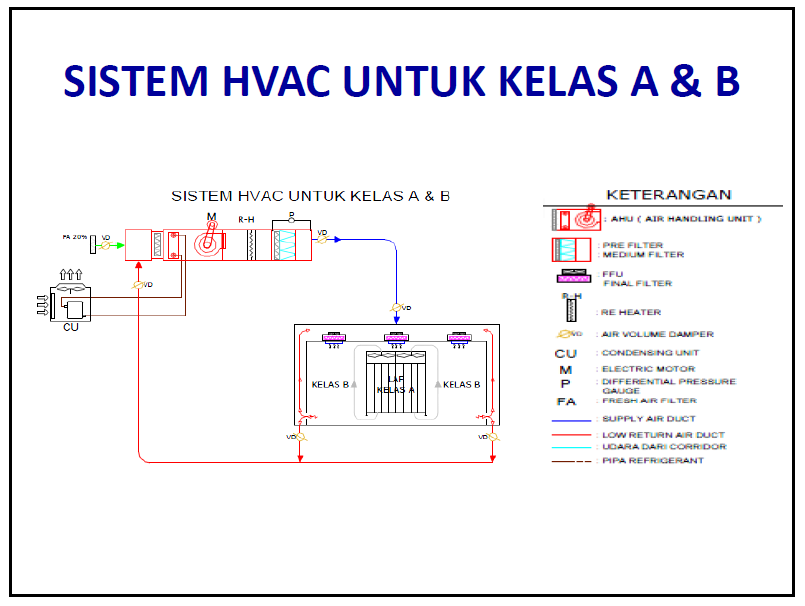The air management system in classrooms is a crucial element that affects students' comfort, health, and productivity. By integrating natural and artificial ventilation while ensuring optimal temperature, humidity, and air quality management, classrooms can become ideal learning environments.
Adequate ventilation is the first step in creating a good air management system. Fresh air can enter through windows or wall vents designed for natural circulation. In rooms with limited ventilation, exhaust fans or air conditioning (AC) systems serve as solutions to maintain airflow. AC units equipped with air filters can also help remove pollutants, dust, and other harmful particles, ensuring clean air intake. These filters must be regularly cleaned or replaced to maintain efficiency.
Classroom temperature management is also essential. The ideal range is between 22–25 degrees Celsius to ensure comfort without disrupting concentration. In hot climates, properly regulated AC or fans can help maintain a stable temperature. Additionally, the use of curtains or double-glazed windows can help reduce excessive heat from outside.
Humidity control is equally important. Ideally, humidity should range between 40–60% to prevent conditions that are too damp or too dry. Excessive humidity can lead to mold growth, while overly dry air can cause respiratory and skin irritation. Humidifiers or dehumidifiers can help maintain this balance.
Furthermore, classroom furniture arrangement should support proper airflow. Desks and chairs should not obstruct ventilation pathways, ensuring even distribution of fresh air throughout the room. This setup also provides ample movement space for students and contributes to a comfortable atmosphere.
Implementing a good air management system in classrooms directly aligns with the SDGs. Clean and healthy air quality supports students’ physical and mental health (Goal 3), while a comfortable learning environment fosters quality education (Goal 4).
By utilizing energy-efficient air management technologies, such as mechanical ventilation and efficient air filters, classrooms also contribute to reducing carbon emissions, in line with climate action goals (Goal 13).
Through these measures, classrooms not only become comfortable learning spaces but also promote environmental sustainability, preparing a healthy generation ready to face future challenges.
Authors: Buana Yaksa & Pram



